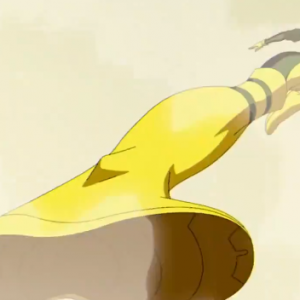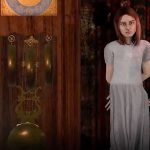Has any other demo had the impact of Hideo Kojima’s genre-redefining PT? That stunning playable teaser for the scrapped Silent Hills may be a decade old now (sorry, yes, that made me feel ancient, too), but its legacy is still undoubtedly shaping the games we play today. One of the latest to pay homage, Supernormal, says it’s the spiritual successor to Allison Road rather than PT itself, another unreleased game that was heavily influenced by Kojima’s aborted horror project. But doing the one thing Silent Hills and Allison Road couldn’t, Supernormal has actually made it into our hands – and while it doesn’t leave the same impact as its inspirations, it certainly has a few moments worthy of them… as long as you’re prepared to get through its underwhelming first half to see them.
Like PT, Supernormal takes place in just a single location – Mr. Sakamoto’s stylish Japanese home – and it’s your job as an investigator named Wyatt to uncover exactly what the hell happened to his daughter, Sophia. Though the home is neat and orderly, there are plenty of signs that something’s amiss. There’s blood spattered on the piano. Bloody handprints are stamped all over the downstairs bathroom. Flies crowd around a pile of unwashed clothing in the laundry room, where a pistol just so happens to lie idly next to the washing machine. While we’re spared the terror of yet another looping hallway extravaganza, Supernormal requires you to become very familiar with Sakamoto’s home, and as you move around – exploring inexplicable sounds and following ominous blood trails – the true horror of what took place here begins to come to light.
That can create an appropriately tense atmosphere, but it’s one that’s frequently shattered by some strange choices, particularly in the first half. For starters, Supernormal’s dull opening cinematic is just your character and Mr. Sakamoto sitting in front of each other for three minutes as the sound effects and music get louder and louder until you can barely hear the conversation; a real problem, given the auto-subtitles just stop working, too. Shortly after, you’ll wish you still couldn’t hear Wyatt, as you’re let loose on the house and he talks you through every idiotic thought that enters his head.
“Bloody handprints amidst a piano-loving environment,” he whispers, inexplicably, when finding blood on the piano. “It’s unsettling to think what might have happened to Sophia. I’ll leave no stone unturned in my search for answers.”
Yes. He actually said that out loud.
“An unexpected sight,” Wyatt adds when he encounters the pistol. “A pistol in this case raises serious concerns. I need to be cautious and determine its relevance to the missing person’s investigation.”
It’s uniformly awful dialogue, delivered in a fairly unconvincing way, but once you’ve made your first lap around the house, Wyatt falls mercifully quiet. That’s wonderful, because it’s here – when Wyatt shuts up, and all you can hear is the sounds of the house settling and what may or may not be the groans of the undead – that things take a turn for the terrifying.
Nothing Supernormal attempts feels particularly unique, but the scares are beautifully done, especially if you’re playing alone in a dark room with headphones (as all horror games should be enjoyed). The first time I realized how the lingering spirit in this house was trying to communicate with me, the hairs on the back of my neck stood to attention. When a disembodied voice firmly told me to keep the light off, you better believe I obeyed it.
The entire 90-ish minute playtime is essentially one giant fetch quest as you look for clues, and you’ll never quite be sure what you need to do to trigger the next event – but the spooky interactions you’ll encounter are genuinely unsettling, with randomized events that are considerably more terrifying than the scripted ones. There’s one where the ghost scuttles up the wall like a cockroach. Another, where it skitters around the place with its back arched, a neat homage to the deleted spider crawl scene from The Exorcist. Other times, it’s stomping around the kitchen, just a few feet away from where you’re sitting, staring at a laptop. It’s only by regularly interacting with the laptop that you’ll be able to progress, though, which adds a delicious beat of tension every time you sit down.
Undoubtedly one of Supernormal’s more intriguing features is a voice recognition system, though it never quite functioned properly for me. If you have a mic live, you can theoretically ask the spirit where it is, or if it can see you. Sadly, even though my mic was being picked up, I wasn’t able to trigger any of the cool TV messages shown in its teaser trailers. I suppose it’s nice that this feature isn’t mandatory, as I was able to complete three playthroughs without using my mic, but it’s a shame such a key feature didn’t work for me during them, even after I realized that the red mic icon meant the ghost can hear you, not that it can’t (surely green would be a more recognizable visual indicator?).
Eventually, though, you’ll not only learn that getting killed by this spirit is entirely out of your hands – it will somewhat arbitrarily decide whether or not you make it through a sequence alive – but it’s without consequence, too. If it decides to take you out (whether or not you do “look behind you”), you’ll wake up on the couch again, having lost no progress at all. This isn’t a complaint exactly, as few things deaden the impact of horror more than making you re-do things over and over again, but it does take some of the fear away. You’ll also eventually discover that the sputter of your flashlight (which you’re never explicitly told you have, by the way) is meaningless, too.
Supernormal does look and sound great, though – the visual style of the Sakamoto home and its lighting in particular are really well designed, even if they borrow many ideas from PT. Most of the time, you’ll move through the story smoothly as well, rarely getting stuck in annoying ways, which – unpopular opinion alert – is a step up from PT’s occasionally super confusing puzzles.
I can’t be as complimentary about Supernormal’s clumsy story, however. “Something something untreated mental health is bad” is as lazy as it is stereotypical, and I anticipated an inevitable “twist” the moment Wyatt made a superfluous comment about a certain item he found lying around. I know Supernormal isn’t the only game guilty of these crimes, but it’s the latest in a long, long run of psychological thrillers that default to this kind of asinine storyline, and we need horror designers to try a little harder than falling back on harmful stereotypes.
Beyond seeking out a second ending, there’s not a lot of replayability here, either. Most scares seem randomized, so while you may see some new encounters in a second playthrough, nothing else changes – including the password you spend the second half trying to find. This means you can turbocharge your playthrough by entering the password the moment you have access to the laptop and circumvent thirty minutes of clue-hunting. Yes, you may possibly see some new jumpscares, but nothing else of note will change, including the default “bad” ending.
























